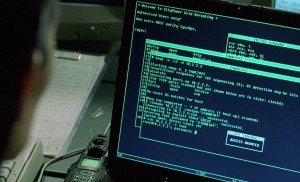Course Description
This course introduces basic networking and security concepts. It serves as a precursor to the more advanced and specialized networking and security courses. Coverage of topics focuses on identifying and understanding the nomenclature of hardware and software use in modern networks.
Credits: 3, prerequisites: none.
Course Preview
Have you ever seen the Matrix Reloaded? This movie is famous among security experts for having actual footage of the Nmap security scanner in action. Trinity uses Nmap to find a vulnerable SSH server to then infiltrate the city power grid. While we will not use it for such devious purposes, you will use Nmap like a professional security expert to discover hosts and services on a network for security purposes. The internet is simply a collection of networks and its importance should be self-evident. The goal of this course is understand how these networks work together to form the internet, what protocols are used and how they work, and how we keep networks and the internet secure.


Course Overview
In this course you will learn about networking and security. They are very important in the information technology ecosystem because networks form the foundation of the internet and it would impossible to share data between computers without networks. Making sure that data is shared in a way that is confidential is also essential in many applications. For example, whenever you use a banking app on your smart phone your instructions will travel over the internet in a (hopefully!) secure fashion. Computer networks and security are somewhat recent developments but the interconnectivity of the world has been increasing rapidly. A good example of this is the development of the internet of things that allows connectivity to many devices such as refrigerators and cars.
In this course, you will explore the different types of networks and all layers that are used to define network protocols, including ways to secure these. To get started, we will look at an overview of the field and touch upon local area networks, basic hardware, MAC addresses, IP addresses, and other fundamental concepts and equipment. Then we will spend a lot of time on looking at these concepts in depth, essentially investigating how packets are routed in a network. Topics include include physical and wireless connections, network topology, routers and switches (and hubs), and TCP/IP. In addition, you will familiarize yourself with several practical tools such as nmap, Wireshark, and others!
Course Syllabus
Course Modules
Module 1: Computer Networks
Module 2: Twisted Pair Cabling
Module 3: Fiber Optics Cabling
Module 4: Wireless Networking
Module 5: Interconnecting LANs
Module 6: TCP/IP I
Module 7: TCP/IP II
Module 8: Routers
Module 9: Switches
Module 10: Routing
Module 11: Internet Technologies
Module 12: Troubleshooting
Module 13: Network Security
Module 14: Course Review
Module 15: Final Exam
Course Objectives
- Describe how networks work.
- Explain how the Internet works.
- List and explain the protocols that make these possible.
- Demonstrate how computer security can be breached.
- Show and discuss methods to detect security breaches.
- Demonstrate how to prevent security breaches.
Course Topics
- Historical evolution of hardware and software used in computer networks
- Describe what computer networking is
- Client/Server networks
- Bits, bytes and bandwidth
- Network file sharing
- Types of computer networks
- Network hardware
- Network protocols for moving messages